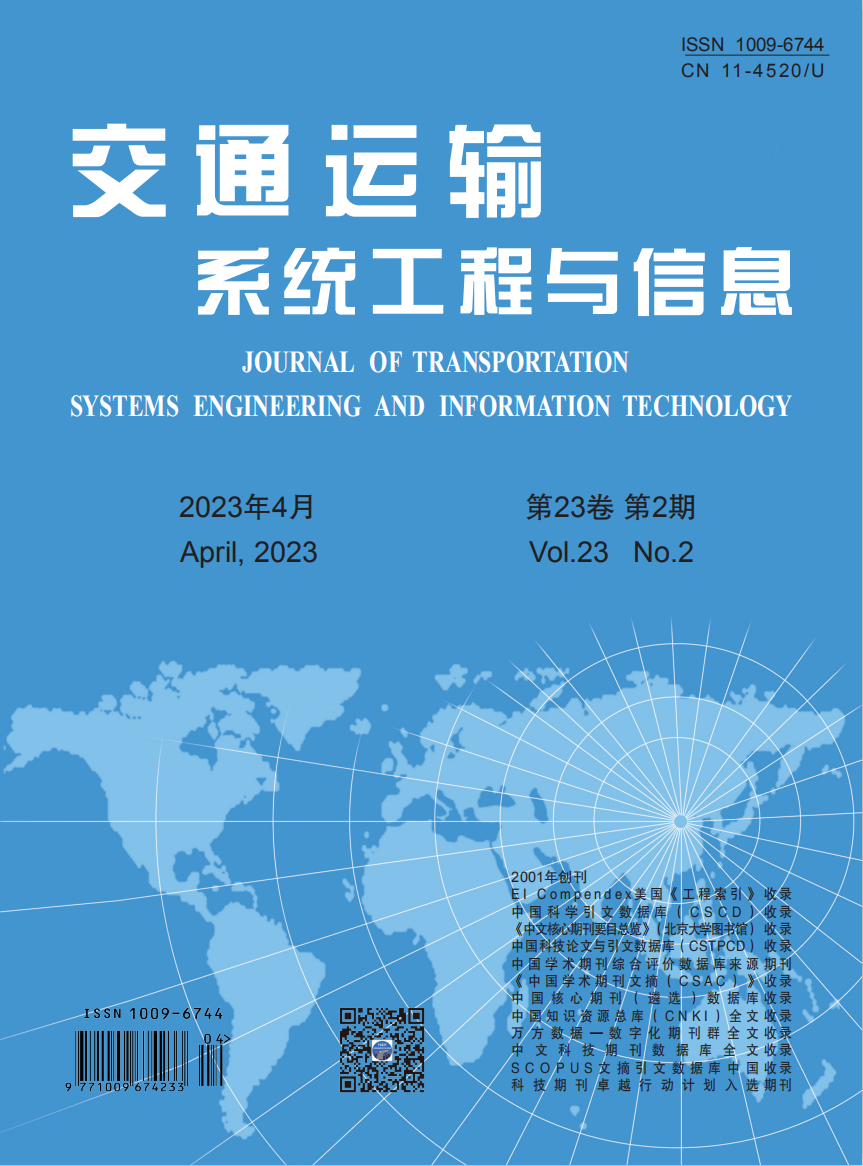|
|
Monitoring and Assessing Carbon Footprint of Individual Trip
Chain in Environment of Mobility as a Service
LI Wen-xiang, CHENG Jia-nan, LIU Xiang-long, MU Kai, CAI Jin-jin, LIU Wei-wei
2023, 23(2):
22-31.
DOI: 10.16097/j.cnki.1009-6744.2023.02.003
Under China's strategic goal of "carbon peaking and carbon neutrality", scientific and accurate monitoring
and evaluation of the carbon footprint of individual travel is the basis for promoting the low-carbon transformation of
urban transportation, but it also faces great challenges. Therefore, based on the data openness and sharing of the
Mobility as a Service (MaaS) platform, a carbon footprint monitoring and evaluation method for urban individual trip
chains in the MaaS environment is proposed. Firstly, we designed an urban transportation carbon source monitoring
index system based on the MaaS platform and realized the extraction and integration of multi-modal transportation
characteristics of users' individual trip chains. Then, we established the carbon emission calculation models for trips by
private motor vehicles and rail transit, respectively, and the carbon emissions of different transportation modes are
calculated and then added up to obtain the carbon footprint of individual complete trip chains. Finally, the carbon
emission reduction of the individual trip chain was evaluated by using the baseline scenario of car trips. The case
analysis of 8424 travel sections collected in Beijing shows that the average person-kilometer carbon emissions of the
trip chain dominated by motor vehicles, buses, rail, and non-motor vehicles are 0.238 kg · pkm- 1
, 0.031 kg · pkm- 1
,0.039 kg · pkm-1
, and 0.0017 kg · pkm-1
, respectively, and the average person-kilometer carbon reduction to the baseline
is 0.029 kg · pkm-1
, 0.22 kg · pkm-1
, 0.23 kg · pkm-1
, and 0.28 kg · pkm-1
, respectively. The carbon emission reduction of
person-kilometers in the trip chain is positively correlated with the proportion of green travel in the trip chain.
Electrifying vehicles on MaaS platforms could increase carbon reduction benefits by 52.5%.
References |
Related Articles |
Metrics
|


